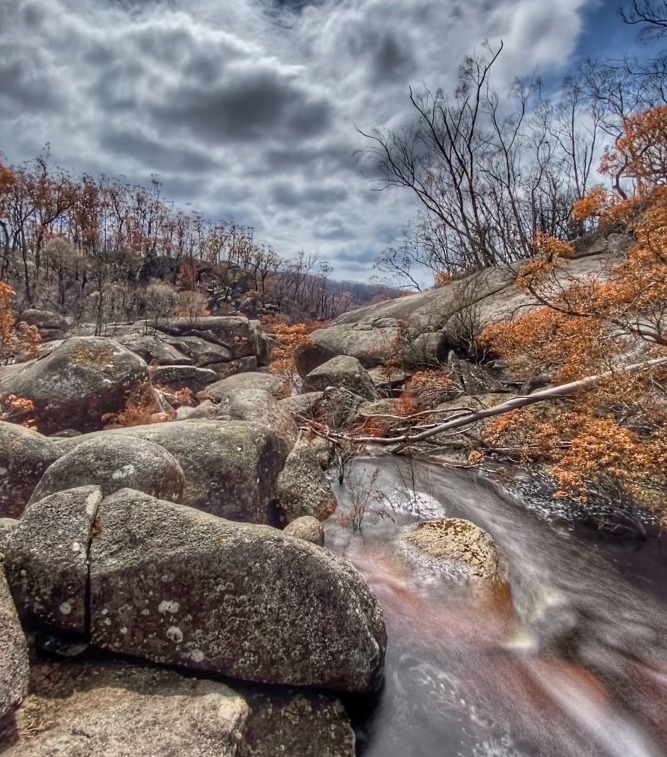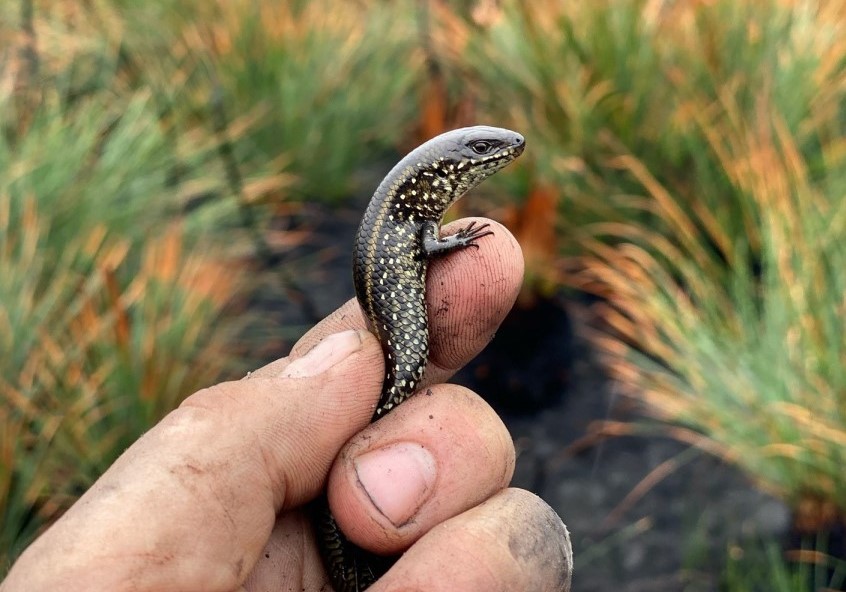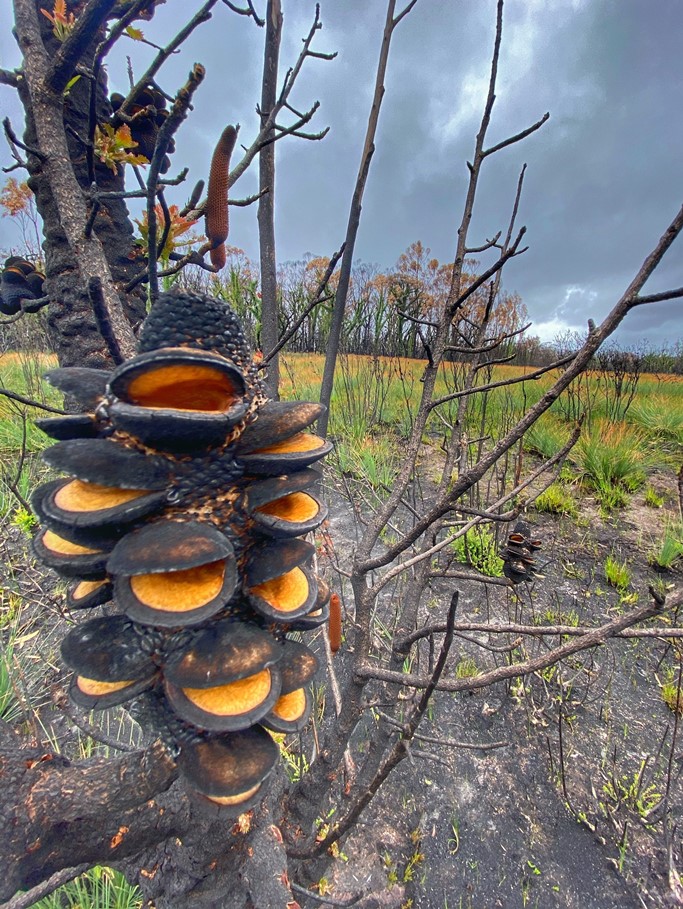The late 2019 – early 2020 ‘Black Summer’ fires were unprecedented in their impact and scale. Extensive tracts of the coastal side of the Great Diving Range in south-eastern Australia were affected, with significant impacts on biodiversity.
Most reptiles and frogs have small home ranges, and even the larger, more mobile species are unable to escape large, fast-moving fires. For many, including some threatened species, eastern Victoria represents a large, and often the most secure and continuous, proportion of their state distribution. Field assessments of fire impacts and threats immediately after fires like this allows us to understand the impacts of the fires, the most immediate threats, and quickly implement recovery management actions.
ARI completed surveys within months of the fires, targeted at species particularly vulnerable to post-fire threats, such as those where:
- a large proportion of their known habitat was likely burnt (e.g. Gippsland Water Dragon)
- they were known to be in decline before these fires (e.g. Alpine Tree Frog)
- burnt areas were previously considered a stronghold of their distribution (e.g. Swamp Skink)
- they have specialised habitat preferences (e.g. Alpine She-oak Skink)
- they have ecological traits that may make them particularly susceptible to impacts from fires (e.g. Lace Monitor)


Immediate and short-term impacts of these fires on reptiles and frogs identified during our surveys include:
- loss of shelter and habitats used for thermoregulation, foraging and predator avoidance
- massive amounts of ash and sediment washing into waterways, burying riparian habitats and smothering egg-laying sites for species such as Water Dragons, turtles and frogs
- reduction in food sources e.g. invertebrates
- increased exposure to predators, including foxes and feral cats, not only due to loss of habitat, but also because body colours and patterns that are usually camouflaged against the background now make the animal stand out
Despite the challenges of accessing fire-affected areas (some were unable to be reached), most of fire-affected East Gippsland and the alpine region were surveyed in the months before winter. There were mixed findings. Some species were not detected or only found in low numbers in burnt areas (e.g. Gippsland Water Dragon). For some species, most (but not all) of their habitat was unburnt (e.g. Alpine She-oak Skink), and others appeared to be more able to persist in burnt areas than most species (e.g. Yellow-bellied Water Skink).
Some key observations from the surveys include:
- habitats that don’t usually burn easily, such as swamps, were severely damaged
- individuals of some species, such as Swamp Skink, were found sheltering in burrows in burnt habitat (although these may represent a small fraction of the numbers in those areas before the fires)
- adjacent burnt and unburnt riparian habitat showed striking differences in the number of Water Dragons
- all remaining shelter sites, such as standing trees (dead or alive), logs and rocks are essential for the persistence of the surviving reptiles and frogs who will be the founders for recovering populations
In addition, several species were unable to be properly surveyed due to access issues, such as the Alpine Bog Skink, Alpine Water Skink, Mountain Skink and Copper-tailed Skink. Confirming the status of these species in burnt areas is a high priority this spring and summer.

Concerns for remaining populations include ongoing exposure to introduced predators, further degradation of habitat from horse and deer trampling and grazing, and geographic isolation that may lead to a loss in genetic diversity. Dense vegetation regrowth can block sunlight from reaching key habitats, making them unsuitable or suboptimal for extended periods. Increasing frequency of fires can permanently change vegetation communities, sometimes rendering them unsuitable for reptiles and frogs that previously occurred there.
This work is informing management actions intended to prevent significant decline and maximise recovery potential.
This project was funded through the Victorian Government’s Bushfire Biodiversity Response and Recovery program (Phase 1).
For more information contact Nick Clemann: research.ari@delwp.vic.gov.au
Page last updated: 03/06/21